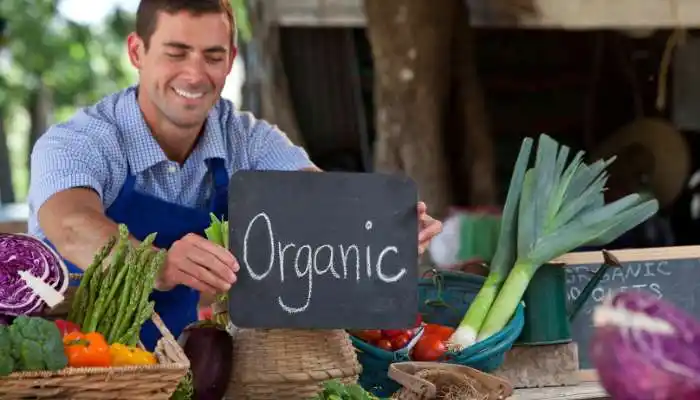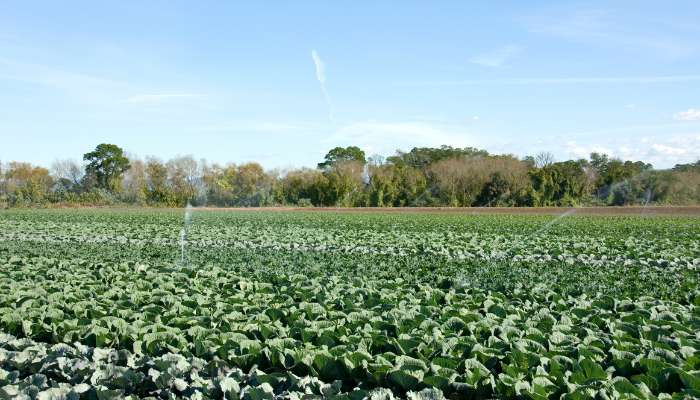Market gardening, often referred to as market farming or market agriculture, is a time-honored practice that bridges the gap between agriculture and commerce.
It involves growing high-value crops on a relatively small scale, with the intention of selling products directly to consumers, restaurants, farmers markets, and other local outlets.
In this guide, we’ll delve into the world of market gardening, exploring its principles, practices, and potential for sustainable and profitable farming ventures.
Market Gardening Table of Contents
Understanding Market Gardening:
Market gardening is characterized by its focus on producing fresh, high-quality fruits, vegetables, herbs, and flowers for local markets.
Unlike large-scale industrial agriculture, which often prioritizes quantity over quality and relies heavily on mechanization and chemical inputs, market gardening emphasizes sustainable farming practices, biodiversity, and community engagement.
By cultivating a diverse array of crops on a small scale, market gardeners can maximize yields, minimize waste, and foster a closer connection between farmers and consumers.
Core Principles of Market Gardening:
Market gardening is guided by several key principles that shape its approach to farming and marketing:
- Crop Diversity: Market gardeners often grow a wide variety of crops to meet the diverse preferences of local consumers and mitigate the risks associated with monoculture farming.
- Seasonality: Market gardening embraces the natural rhythms of the seasons, with farmers planting, harvesting, and rotating crops according to the local climate and growing conditions.
- Sustainability: Market gardeners prioritize sustainable farming practices such as crop rotation, cover cropping, composting, and integrated pest management to minimize environmental impact and promote soil health.
- Direct Marketing: One of the defining features of market gardening is the direct sale of produce to consumers, bypassing intermediaries such as wholesalers and supermarkets. This direct relationship allows farmers to command higher prices for their products and build a loyal customer base.
- Community Engagement: Market gardening fosters a sense of community by bringing farmers and consumers together through farmers’ markets, community-supported agriculture (CSA) programs, and other local food initiatives. This direct interaction allows consumers to learn about where their food comes from and forge connections with the farmers who grow it.

Essential Practices for Successful Market Gardening:
To thrive as a market gardener, it’s essential to adopt proven practices that maximize productivity, efficiency, and profitability:
- Site Selection: Choose a suitable location for your market garden, taking into account factors such as soil quality, sunlight exposure, water access, and proximity to markets and customers.
- Crop Planning: Develop a crop plan that takes into account factors such as crop rotation, succession planting, companion planting, and intercropping to optimize space and maximize yields.
- Soil Management: Implement soil-building practices such as cover cropping, mulching, composting, and minimal tillage to improve soil fertility, structure, and health.
- Pest and Disease Management: Adopt integrated pest management (IPM) strategies that prioritize cultural, biological, and mechanical controls over chemical pesticides to minimize environmental impact and preserve beneficial insects.
- Marketing and Sales: Develop effective marketing strategies to promote your products and attract customers, including creating a strong brand identity, leveraging social media and online platforms, and participating in farmers’ markets, CSA programs, and other local events.
Benefits of Market Gardening:
Market gardening offers a wide range of benefits for farmers, consumers, and communities alike:
- Economic Viability: Market gardening can be a profitable enterprise for small-scale farmers, allowing them to earn a living while producing fresh, high-quality food for local markets.
- Environmental Sustainability: By prioritizing sustainable farming practices, market gardeners can minimize their environmental footprint, conserve natural resources, and promote biodiversity.
- Food Security: Market gardening contributes to local food security by providing communities with access to fresh, nutritious produce year-round, reducing reliance on imported and industrially produced foods.
- Community Resilience: Market gardening fosters resilient and interconnected communities by strengthening local food systems, supporting small-scale farmers, and promoting food sovereignty and self-reliance.
Image | Product Name | Review | Price |
Scaling Up: Transitioning from Hobby to Business:
Many market gardeners start as hobbyists, cultivating a small plot of land for personal enjoyment or supplementary income.
However, as their skills and confidence grow, they may choose to scale up their operations and turn their passion for gardening into a full-fledged business. Here are some key considerations for scaling up a market gardening venture:
- Business Planning: Develop a comprehensive business plan that outlines your goals, target market, production methods, marketing strategies, and financial projections. This plan will serve as a roadmap for your business and help you secure financing, attract investors, and make informed decisions.
- Infrastructure Investment: Invest in the necessary infrastructure and equipment to support a larger-scale operation, such as irrigation systems, high tunnels or greenhouses, storage facilities, and transportation vehicles. These investments will increase efficiency, productivity, and profitability.
- Market Expansion: Explore opportunities to expand your market reach beyond local farmers’ markets and CSA programs, such as selling to restaurants, grocery stores, schools, hospitals, and other institutional buyers. Consider participating in wholesale markets, online sales platforms, and agritourism events to reach new customers and increase sales.
- Staffing and Management: As your business grows, you may need to hire additional staff to help with farm operations, marketing, sales, and administrative tasks. Invest in training and professional development to ensure that your team has the skills and knowledge they need to succeed.

Challenges and Solutions in Market Gardening:
While market gardening offers numerous benefits, it also comes with its fair share of challenges. Here are some common challenges faced by market gardeners and strategies for overcoming them:
- Seasonality and Weather: Market gardening is highly dependent on weather and seasonal fluctuations, which can impact crop yields, quality, and availability. To mitigate the effects of seasonality, consider diversifying your product offerings, extending the growing season with season extension techniques such as high tunnels or row covers, and developing value-added products such as preserves, pickles, and dried herbs.
- Marketing and Competition: With an increasing number of farmers’ markets, CSA programs, and direct-to-consumer sales channels, competition in the market gardening sector is intensifying. To stand out from the competition, focus on quality, consistency, and customer service, and differentiate your products through unique varieties, flavors, and packaging.
- Labor and Labor Costs: Labor is a significant cost for market gardeners, especially during peak planting, harvesting, and marketing seasons. To manage labor costs, consider streamlining farm operations, investing in labor-saving tools and equipment, and exploring alternative labor models such as internships, apprenticeships, and volunteer programs.
- Land Access and Affordability: Access to land is a major barrier for aspiring market gardeners, especially in urban and peri-urban areas where land prices are high and development pressure is intense.
- To overcome this challenge, consider leasing or renting land, partnering with landowners or institutions, participating in land trusts or land-sharing programs, or exploring alternative land tenure models such as cooperative or community land ownership.
Market gardening is a dynamic and evolving practice that offers a pathway to sustainable and profitable farming. By embracing principles of diversity, sustainability, and community engagement, market gardeners can cultivate vibrant local food systems that nourish both people and the planet.
Whether you’re a seasoned farmer looking to diversify your income or an aspiring grower seeking to make a positive impact on your community, market gardening offers endless opportunities for innovation, creativity, and growth.
As you embark on your market gardening journey, remember to stay curious, adaptable, and resilient, and never underestimate the power of a well-tended garden to inspire, nourish, and connect us all. Happy gardening!




















